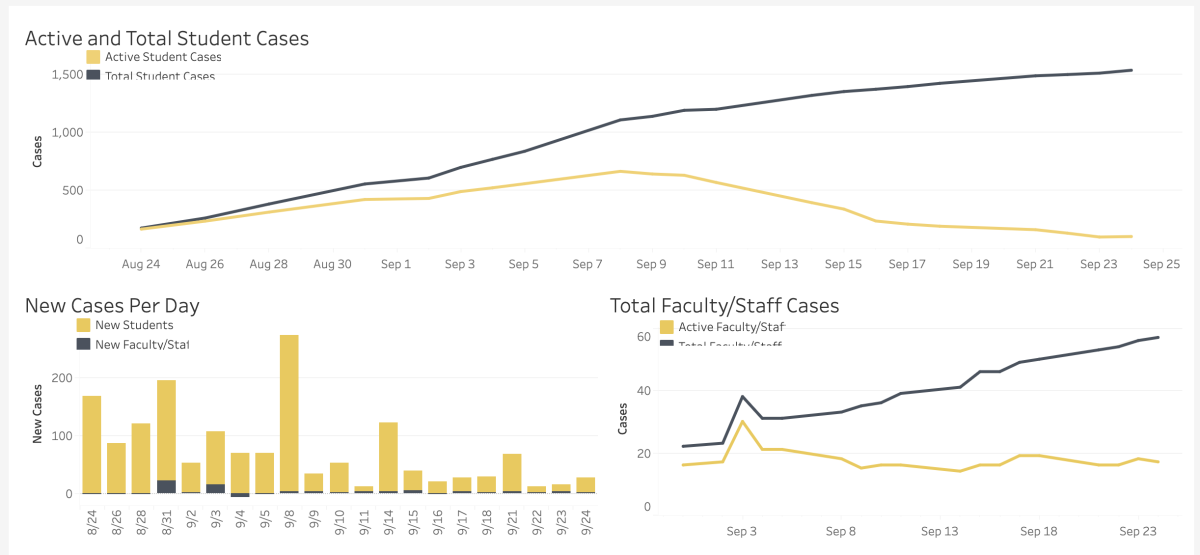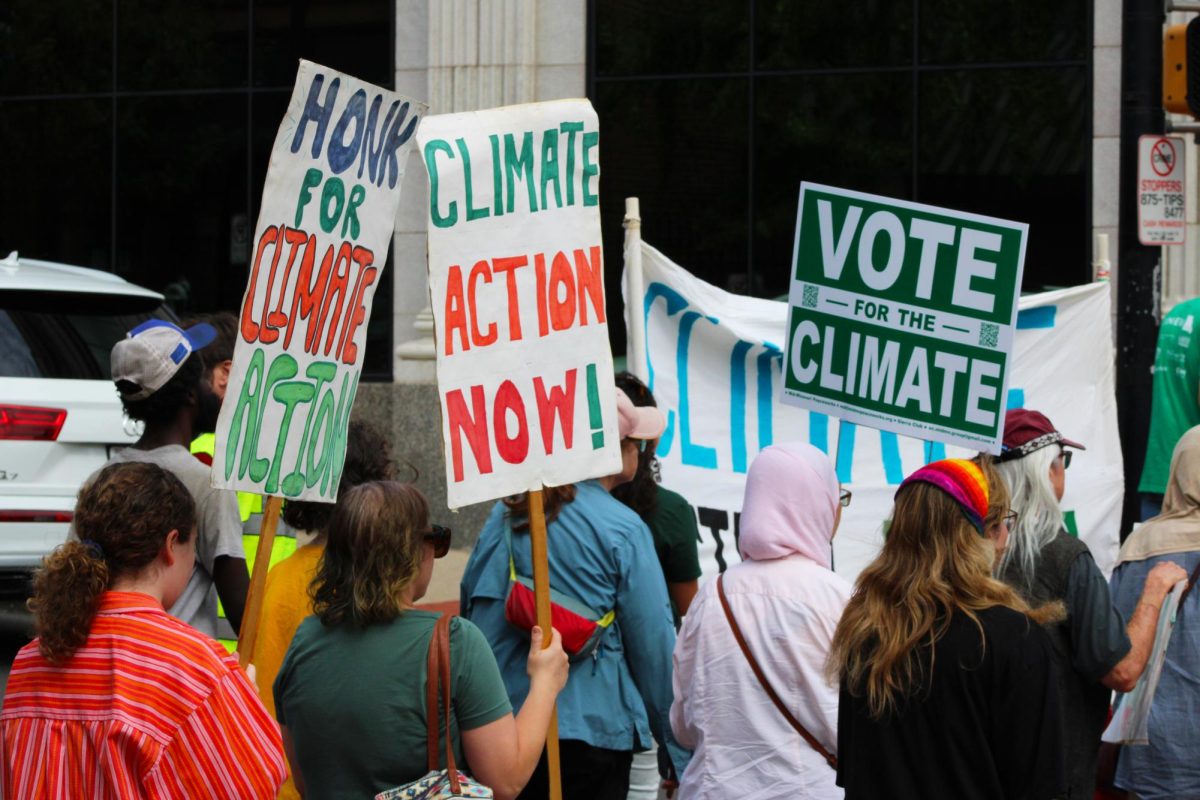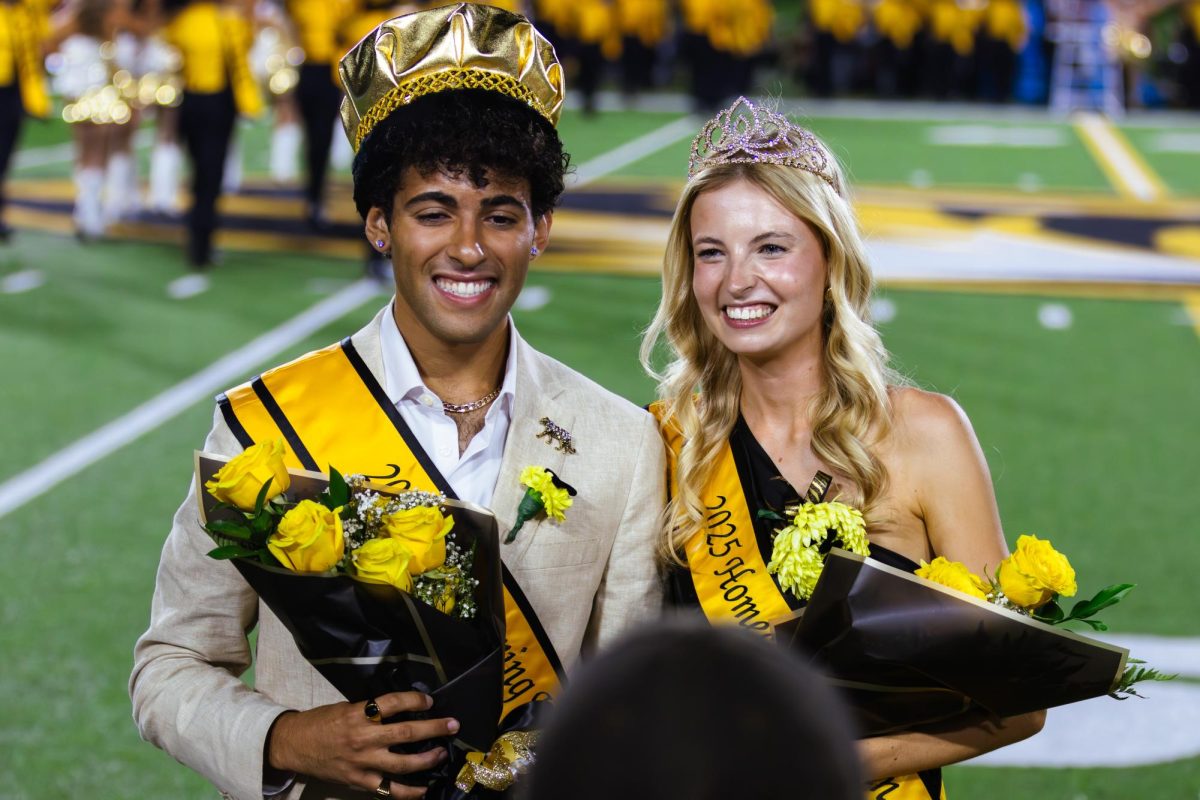The University of Missouri has seen a drastic decline in COVID-19 cases over the last few weeks, down to 95 active student cases as of Sept. 24, according to MU’s tracker.
In a press conference on Thursday following a Board of Curators meeting, UM System President and MU Chancellor Mun Choi cited an 88% decrease in student COVID-19 cases since a peak on Sept. 5.
Choi attributed the cause of the decline partly to students taking the pandemic more seriously in terms of mask-wearing and social distancing, along with stricter enforcement of COVID-19 regulations.
“I believe we have been more forceful in our enforcement,” Choi said. “When I say enforcement, it’s not walking down the street to see if a person has a mask or not, we’re talking about those who willfully and knowingly spread the disease when they know they have the symptoms.”
MU News Bureau director Christian Basi referenced 542 violations referred to the Student Accountability office, clarifying that students can commit multiple offenses.
Boone County Health Department Health Educator Ashton Day agrees with Choi’s inclination that students and community members are taking the pandemic more seriously.
“I think people, at least the people I know who live in town are like, ‘Oh, wait, cases are going up, maybe I’m not going to go out to eat tonight or maybe I’ll just stay home this weekend,’” Day said.
Day credits the city order passed on Aug. 28 as a key factor in the decline of cases. The order mandated restaurants, bars and entertainment venues to close by 10 p.m. and limited public and private gatherings to 20 people or less.
Day also noted that the order went into effect just over a week before Labor Day and the Sept. 5 peak.
“Not seeing the rising cases after that [Labor Day] is why we think some of it is because of the order,” Day said. “And we’ve seen this every time since the pandemic started once there’s a rather large spike in cases. Obviously, before September 5 it was a much lower number, but it was still like what we had been seeing, our cases go back down, activity kind of slows down.”
Day mentioned the influx of students returning to MU’s campus and unknowingly bringing cases with them as another cause of the initial spike and subsequent decline.
“We expected a strong increase at first,” Day said. “So it makes sense now that they’ve been here for a while, if they’re following quarantine and isolation instruction that it would then slow.”
Choi mentioned MU’s limited testing approach as compared to other universities around the nation as a point of success, citing the mass testing at the University of Illinois Urbana-Champaign.
“What they are also finding out is that [mass testing] may not be the appropriate approach because even though it was signaled as the gold standard, it gave some indication that those students that got tested and were negative … that they didn’t have COVID,” Choi said. “It was going to develop — [it] gave them a sense of invincibility.”
That philosophy has not been backed by a prominent public health entity.
When asked about testing and case numbers, Choi cited the Boone County Health Department as the sole “official record keeper” of COVID-19 cases.
In response to the decline in cases, the Boone County Health Department altered the public health order on Sept. 16, retracting the restriction on selling alcohol past 9 p.m. and mandating entertainment venues, restaurants and bars that serve alcohol to close by 10:30 p.m.
“I think right now it’s clear that the order is successful in the sense that it is keeping our cases more under control,” Day said. “What we’re looking at now is long term, what does that look like, how do we move forward.”
_Edited by Eli Hoff | [email protected]_








